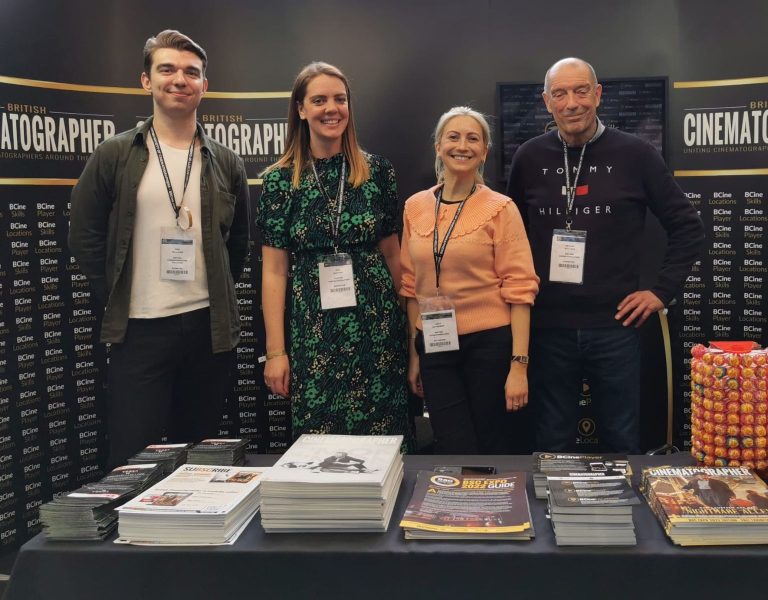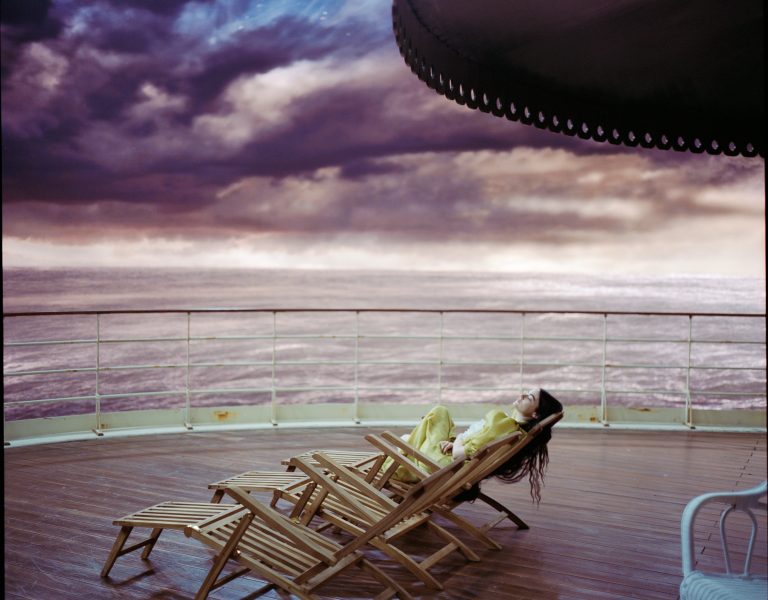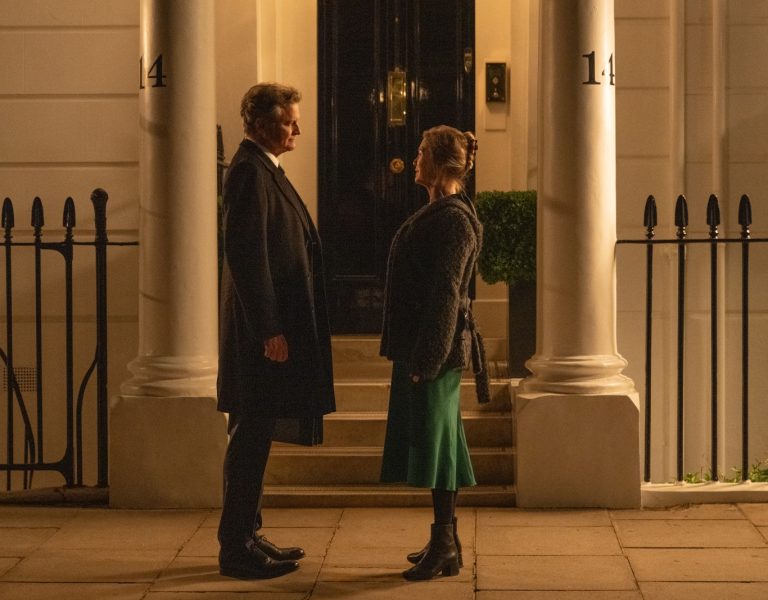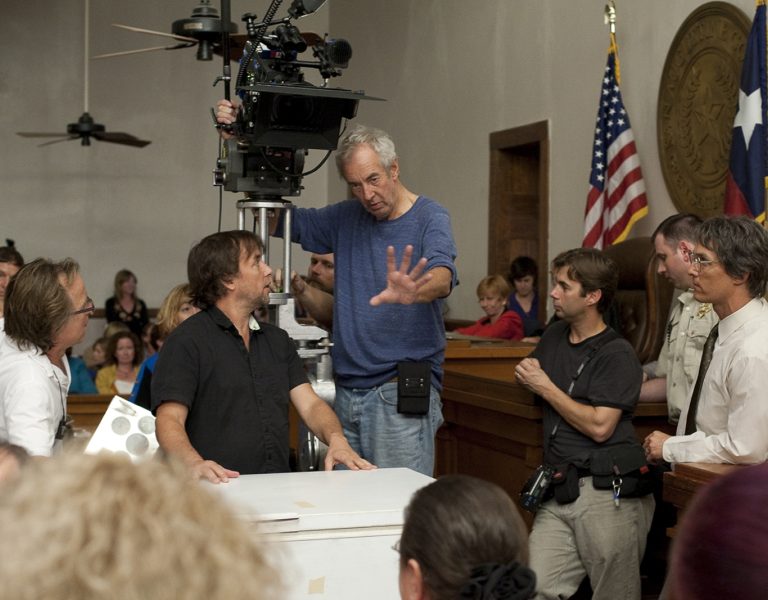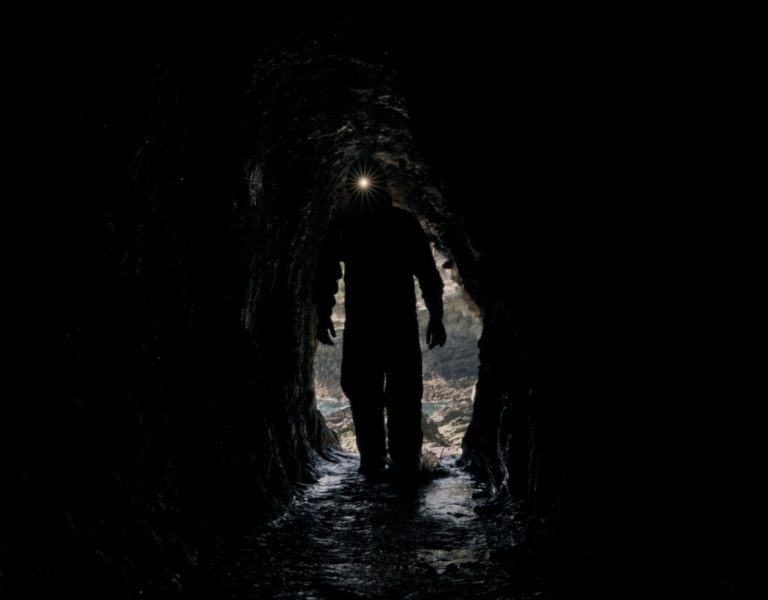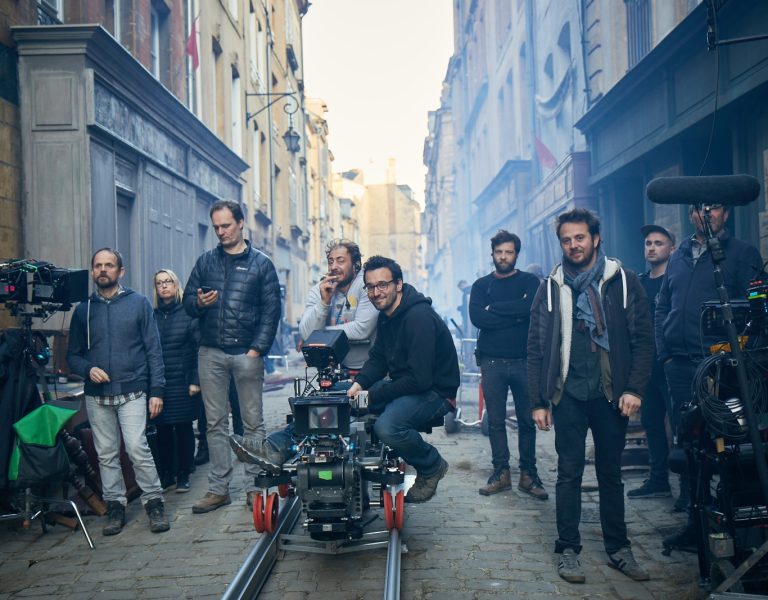BREAKING THE MOULD
Three decades after working on The Wrong Trousers, Dave Alex Riddett BSC and Tristan Oliver BSC still treasure the stop-motion classic as one of their most special filmmaking experiences. The cinematographers revisit the award-winning production that is adored by audiences worldwide.
Stop-motion masterpiece The Wrong Trousers recently marked a milestone, celebrating the 30th anniversary of the release of Nick Park’s Oscar-winning production about an inventor called Wallace, his canine assistant Gromit, and a pesky penguin. Aardman’s first half hour film received more than 30 awards to become one of the most successful animated movies, and its cinematographers Dave Alex Riddett BSC and Tristan Oliver BSC consider it one of the most cherished and rewarding projects they have been part of.
“Even when shooting the latest Wallace and Gromit feature films I’m working on 30 years later, I try to recreate that unique feeling we had back then on the studio floor,” says Riddett (Shaun the Sheep Movie, Wallace and Gromit: The Curse of the Were-Rabbit, Chicken Run). “We felt like pioneers in the old days of Hollywood. I adored the idea that there were no rules back then and felt what we were doing didn’t really have rules attached either. The Wrong Trousers really broke the mould for stop-motion filmmaking.”

Riddett and Oliver studied the same film and television course at Bristol University nine years apart and first met when Oliver was a 19-year-old student at the university and Riddett was working as a technical supervisor in the camera department. “Dave taught me everything I know from a cinematography perspective – about what an F stop was, depth of field, and how to use a camera,” says Oliver.
Having known Aardman co-founders Peter Lord and David Sproxton since the late ‘70s – “when the business was a two-man operation” and they were shooting clay character Morph for children’s programme Take Hart – Riddett started working professionally with Aardman in around 1984, joining the company shortly before Nick Park arrived, working on commercials and short films including Park’s Academy Award-winning Creature Comforts.
Oliver (Fantastic Mr Fox, Isle of Dogs, Chicken Run) came on board in 1989, having shot music videos and short films for friends after leaving university. “I phoned Aardman to borrow some lights – by this point, there were five of them – and they asked me what I was doing next week and if I wanted to come on down to shoot. I obviously said yes and then they kept asking me back to shoot commercials and some short films.”
Riddett admits stop-motion cinematography “wasn’t really a career option” back then and they had to “grow an industry” around them. “Aardman struck gold because people liked their commercials such as the Electricity Board’s ‘Heat Electric’ campaign featuring their Creature Comforts animal characters. We had early successes with Peter Gabriel’s “Sledgehammer” music video but it was the commercials that enabled Aardman to buy more equipment and employ people like ourselves.”

New opportunities
The Wrong Trousers presented Riddett and Oliver with their first chance to work on a longer narrative project encompassing multiple scene changes, having honed their skills on commercials. Riddett considers it an “enormously exciting and creative point in Aardman’s genesis” which he and Oliver happened to “be there at the right time to enjoy”.
Oliver remembers the public perception of stop-frame at the time being mainly linked to children’s TV series: “Often little attention was paid to how they were photographed, but Dave and I wanted to make movies that looked beautiful. Dave Sproxton – half of Aardman – was also important in this equation and very much on the camera side, driving towards making it look cinematic.”
When joining creative forces to make The Wrong Trousers, the cinematographers never felt they were making a film for children. They weren’t excluding them but they were also making it for themselves. “We knew we were working on something very special but it wasn’t until its premiere at Annecy Film Festival in the open air on a big screen that we saw the overwhelming response and realised it worked in the outside world too,” says Riddett. ”It appealed to a lot of people.”

Both cinematographers agree the 1993 animated classic’s success was largely determined by filmmaker and animator Nick Park’s vision. The six years he spent at the National Film and Television School (NFTS) working on his graduation film A Grand Day Out, formed the basis of the look of a Wallace a Gromit production. However, as stop-motion animation is a labour-intensive craft, the film wasn’t complete when he finished his course.
Park had been impressed by Aardman’s Peter Lord and David Sproxton’s animated films and Morph on television and asked if they would speak at the NFTS where he was studying. As Aardman was looking for an animator to come on board they invited Park to work on projects for the BBC in Bristol, moving on to animate Morph before joining the company full-time in 1985, working on projects including “Sledgehammer”.
At Aardman, Park completed A Grand Day Out and created Creature Comforts. While both received short film Oscar nominations, Creature Comforts was crowned victorious in the category at the 1990 ceremony, marking the beginning of a string of award-winning stop-motion creations for the company.

“The way Nick writes stories is incredible, based on so many things that inspire him – from Hitchcock and Tom and Jerry to Hammer Horror and Powell and Pressburger – which were also things that inspired us. His animations are an absolute joy to work on as cinematographers,” says Riddett.
Park’s creativity and aptitude for storytelling were in full force in The Wrong Trousers – a tale of a mysterious penguin lodger, Feathers McGraw, who moves in with Wallace and disturbs the harmony, forcing Gromit out of his room. When the penguin hatches a plan to steal a diamond from the city museum involving inventor Wallace’s techno-trousers, Gromit fears for his companion’s safety and takes on the villainous penguin.
Having the freedom to make the film you want to make is a rare opportunity which Oliver was grateful for: “That was absolutely true of The Wrong Trousers. It was created by a tiny crew of mostly between six and eight people in the studio and every morning we’d run to the cutting room – because it was all shot on 35mm – and the sense of anticipation was always rewarded. The film had its own momentum and we knew from day one it was special. The most fun I’ve ever had was definitely making The Wrong Trousers.”

Despite having a small budget, few facilities, no motion control equipment, and a fairly basic 35mm camera and lens package, the energy and passion the team put into the film resulted in a unique style that wowed audiences. “You very rarely get to work with storyboards drawn by one hand, but Nick created them all,” says Oliver. “He also has an excellent cutting sense so you could literally hold the storyboard in one hand and line the camera up with the other and it would fit.”
Fleshing out the production with lighting, production design and set dressing was determined on a day-by-day basis, whereas now stop-motion cinematographers work with the art department three or four months before a set lands on the studio floor.
“Working very closely with set builders and model makers is part of our process now but back then it was as simple as looking at the shape of a set and seeing if a camera or animator’s hand could fit in there,” says Riddett, who applauds assistant art director Phil Lewis and art director Yvonne Fox’s “fantastic job” on The Wrong Trousers when reinterpreting and extending Park’s vision from A Grand Day Out. Rather than flat walls, their sets were all about colour and texture, which inspired the cinematographers.

Creative camaraderie
Aardman’s success in commercials allowed them to buy a larger space in a former banana warehouse in Bristol and build a first-floor studio in which The Wrong Trousers was one of the first productions to be shot. Riddett recalls the camera moving when anyone walked on the wooden floor, so they created a “No clomping” sign. “The ceiling was also only about eight feet high so none of the scenes are key lit from higher than that, which is a huge achievement,” he adds. “Despite it being a terrible space to shoot in, there was this real sense of camaraderie during that 14-month shoot.”
Shooting on Kodak Eastman Color Negative 5248 film stock, the cinematographers worked with two Mitchell S35 cameras, a Mitchell NC and a Newman Sinclair 35mm camera, using an inclined prism to capture low-angle shots. “The Mitchell’s shutters are very light tight and it was affordable and easily converted for single frame use. It’s a real workhorse with a super steady mechanism and you could run it at one frame a second or 125 frames a second,” says Oliver.
The Newman Sinclair – a World War II reconnaissance camera – originally had a clockwork, spring-driven, 200’ internal magazine, but the one used to shoot The Wrong Trousers’ zoom in on the penguin in prison was converted to run a 400’ Bell & Howell mag with a stop-frame motor. “Despite it having a beautiful shutter mechanism, the Newman Sinclair was not very light tight, so a G-clamp was used to keep the door shut,” Riddett adds. “All the cameras were hidden and covered in thick black material to help with light proofing.”

The cinematographers worked with a set of Canon K35 prime lenses, 25-250 (10:1) T4 Cooke Cine Varotal Zoom and 5:1 zooms, Angénieux 6:1 zoom, Baltar primes and Cooke Speed Panchros and S2s (for the Newman-Sinclair).
“We also only had one magic arm (to hold items in place on set) as they had only just been invented,” adds Oliver. “You’d typically have hundreds on a modern set, but we had to schedule it in if we wanted to use the one arm.”
The experience was a masterclass in positioning the camera in the right place and letting the scene play out in front of it. As Riddett learnt on the shoot and still abides by to this day, if scenes are well composed – which Park’s always were – almost anything can take place within them. “There are only around 140 shots in the entire film, which is a third to a quarter of most stop-motion we work on now, but you don’t feel it’s slow,” adds Oliver.
Riddett still aims to achieve The Wrong Trousers’ sense of purity centring around what is in front of the camera rather than relying on post. “Aside from the laser beams and titles which were an optical effect and the rain which was a double exposure, there were no effects in the film. Nothing could be digitally erased because that technology wasn’t available,” says Riddett.

Always thinking outside the box and seeking inspiration and resources from a variety of avenues, the inventive crew used a plastic starburst filter given away on the cover of Amateur Photographer magazine to produce a flash that appears on the diamond. And when Feathers McGraw uses the techno-trousers to climb up a wall, the team worked around the problem of the studio only being eight feet high by placing the building the penguin scaled and the camera on its side and shooting horizontally.
Lighting equipment mostly comprised of Strand theatre lights including 2K and 5K fresnel tungsten (Castor and Pollux), 16/30 and 28/40 profile spots and a 650W quartet fresnel (as a key light in Wallace’s living room which burned for the entire shoot without needing a bulb change). These were joined by Iris 1 cyc lights, Altman Micro Ellipse small profile lamps (an architectural lamp for theatre displays) and M50 12v bulbs (kitchen down lighters) mounted on rod, creating general overhead fill in night-time room interiors.
“Occasionally we’d have a camera assistant or a spark, but generally Tristan and I helped ourselves to the available equipment. Most were theatre lighting fixtures because we found them a lot cheaper and more adaptable for precision work than film lighting. They were also designed to burn for longer which was needed for the amount of time the sets needed to stay lit,” says Riddett.
The basic set in The Wrong Trousers was a very long room, evenly lit so the shots could be looped. “Every time we got to the end of the room, the camera went behind a sofa and then we picked up the sofa and put it at the beginning of the room, backed the camera up and started all over again,” explains Oliver.

On track for success
The film’s much-loved climactic chase sequence – in which the gun-wielding penguin attempts to make an escape on a toy train – has been praised as one of the great feats of stop-motion animation. To capture the action – as Gromit and Wallace are in pursuit of the penguin, racing around the tracks – the train was attached to the front of the camera which was mounted on a homemade dolly with a crane attached to it.
“Our rigging gear for attaching the puppets to the camera was laboratory equipment called Climpex rods. And as we had no motion control equipment it was done in a simplistic manner which gave it a lot of energy. Even with the sophisticated motion control equipment now available, we’re trying to recreate that rickety, crude look we developed,” says Riddett.
Captured with a long shutter speed to achieve motion blur, the train was pushed or pulled. Every time the animator moved the camera, the train moved and wheels turned. Oliver built a rig for a POV shot from Gromit’s perspective when the train travels along the track and around the corner, as the dog frantically lays down track in front of the camera. “I built a wedge out of MDF and furniture casters because that’s all we had and then attached a camera. Rehearsing that involved me kneeling on the set and pushing the camera two and a half inches per frame,” he says. “But when looking through a film camera eyepiece the image disappears as you press the button, so the entire shot is essentially shot blind.”

Creating the illusion a character or object is moving through air, such as the penguin flying through the air in the train sequence, was achieved using a photograph or cut out on a sheet of glass suspended in front of the camera with the background moved behind it. “Similarly, bullets from the penguin’s gun were on a plastic rod held in front of the camera,” says Riddett. “Old in-camera and theatrical stage effects like these gave the film life.”
Despite originally thinking they would light the sets realistically, the cinematographers developed their own rules, enabling them to change from one style to another. Riddett looks at stop-motion filmmaking as “inventing your own reality” that opens up “limitless possibilities”.
Working with a team of like-minded, ambitious and creative individuals also played a significant part in the film’s success. Riddett believes sharing “the same vision and passion” with Oliver was key to the fruitful and rewarding collaboration they enjoyed. “We’ve never clashed stylistically,” agrees Oliver. “And this allowed us to create a look on that film we then took on to the first Chicken Run movie.

“There’s something about The Wrong Trousers we’re never going to do again though which is not so much down to risk-taking but trust. The alchemy is not as great as it used to be because everyone can see what’s coming off the digital camera accurately. So the ability to be that person in the space who absolutely knows what is being captured has been somewhat taken away from the cinematographer. On The Wrong Trousers it really felt the people in the studio made that film – we liked to say ‘it was made from the floor up rather than from production down.’”
While Riddett has carried out regrades on other productions he has shot, he refuses to do so on The Wrong Trousers because “it’s all part of the look. You have to trust that not everything has to be super slick. You can smooth all the goodness out of stop-motion films. At Aardman we actually celebrate the fingerprints, they’re all part of it. The difficulty in making these films also provides the aesthetic.”
Advances that have since been made in motion control have proven helpful when the cinematographers wanted to expand the size of the canvas working on films such as Chicken Run by filling the cinematic screen and having a greater ability to move the camera. But for the most part, Oliver believes technological evolution has been an advantage to the animator. “They used to have to work using an image coming through the tap on the 35mm camera, which was a heavily degraded image. Now they have a lovely 2K, sometimes 4K live image from the digital cameras.”
However, the lack of technological wizardry and advanced post-production trickery was all part of The Wrong Trousers’ charm and appeal. “You had to think on the floor whereas those working on many movies these days will often say, ‘Oh, we’ll fix that in post.’ So you end up with this great mountain of things to do at the end,” adds Oliver. “I struggle to find anything negative about The Wrong Trousers and I can’t think of another film I’ve worked on where I don’t at some point go, ‘Oh, I wish I’d done that a bit differently.’”

